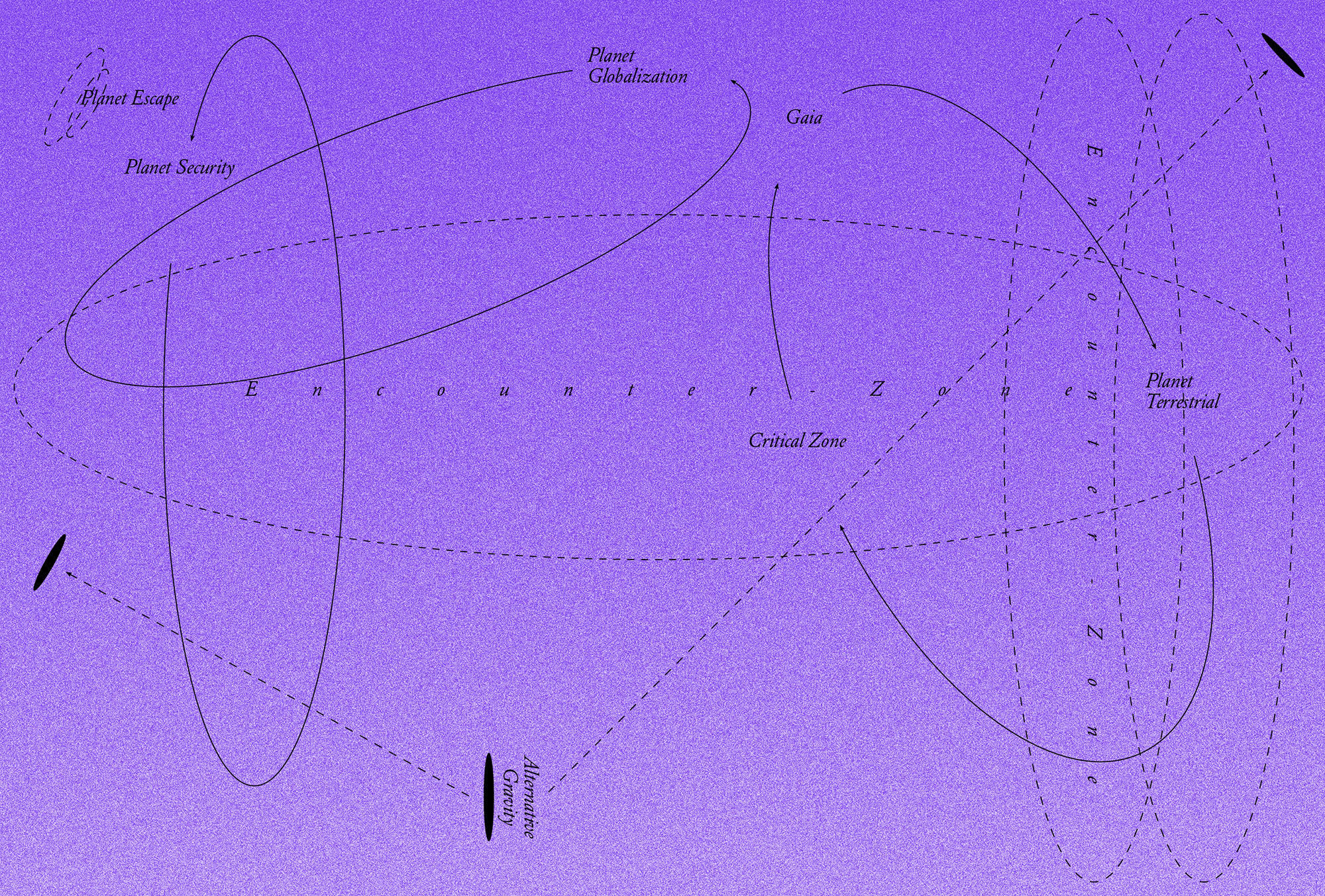Yuk Hui, “Cosmotechnics as Cosmopolitics,” e-flux journal, no. 86 (November 2017) →.
Karl Jaspers, The Origin and Goal of History (1949; Routledge & Kegan Paul, 1953).
Jaspers, Origin and Goal of History, 1.
Jaspers, Origin and Goal of History, 52, 61.
Jaspers, Origin and Goal of History, 61.
Robert Bellah, “What is Axial about the Axial Age?” European Journal of Sociology 46, no. 1 (2005): 73.
Bruno Latour, “Why Has Critique Run out of Steam? From Matters of Fact to Matters of Concern,” Critical Inquiry 30, no. 2 (2004): 231.
See the excellent critical review by John Boy and John Torpey, “Inventing the Axial Age: The Origins and Uses of a Historical Concept,” Theory and Society 42, no. 3 (2013): 241–59.
Bronislaw Szerszinsky, “From the Anthropocene Epoch to a New Axial Age: Using Theory-Fictions to Explore Geo-Spiritual Futures,” in Religion and the Anthropocene, ed. Celia Deane-Drummond, Sigurd Bergmann, and Markus Vogt (Cascade Books, 2017), 37.
Dipesh Chakrabarty, “The Climate of History: Four Theses,” Critical Inquiry 35, no. 2 (2009): 197–222.
The idea of going back three thousand years in order to recover the subjective conditions of the Anthropocene predicament has some illustrious antecedents. Think of the Dialectic of Enlightenment, where the authors decide to go beyond the critique of social domination within capitalism to undertake a transhistorical critique of instrumental reason (Ulysses as the first bourgeois!). Not to mention Nietzsche and his archaeology of truth as value, the deconstruction of the Hellenic equivalent of the “Mosaic distinction” that Jan Assmann sees in Abrahamic monotheisms. See Assmann, The Price of Monotheism (Stanford University Press, 2013).
Benjamin Schwartz, “The Age of Transcendence,” Daedalus 104, no. 2 (1975): 3.
It should be noted, however, that the celebration of freedom as a diacritical attribute of the species, the mark of its ontological state of exception, is widely distributed across the political spectrum, including, for example, among contemporary thinkers of the “communist hypothesis.”
Quoted in Vítor Westhelle, Eschatology and Space: The Lost Dimension of Theology Past and Present (Palgrave Macmillan, 2012), xiii. The time of “axial” cultures, it should be noted, is conceived according to a linear and future-oriented scheme (terrestrial or supra-terrestrial), while “pagan” spatiality would be associated with a primitive cyclical (therefore temporally lapsed) temporality. See the classical essay by Karl Löwith, Meaning in History (University of Chicago Press, 1949); and the highly original study by Westhelle.
On the concept of negligence, see Latour’s commentary on a passage by Michel Serres in Latour, Facing Gaia (Harvard University Press, 2017), 152.
Alan Strathern, Unearthly Powers: Religious and Political Change in World History (Cambridge University Press, 2019).
Strathern, Unearthly Powers, 4.
Strathern, Unearthly Powers, 132.
Stephen Toulmin, Cosmopolis: The Hidden Agenda of Modernity (University of Chicago Press, 1990).
Stephen Jay Gould, Time’s Arrow, Time’s Cycle: Myth and Metaphor in the Discovery of Geological Time (Harvard University Press, 1987).
Bruno Latour, We Have Never Been Modern (Harvard University Press, 1993).
In Unearthly Powers, Strathern observes that certain core values of immanentist religiosity—wealth, fertility, consumption, victory, worldly success, etc.—are also dominant in modern secularized society (37). Nevertheless, the scientific culture he assumes in his analysis is, under important epistemological aspects, precisely “non-secular” in that it refers to an idea of Nature that is the direct heir of Christian transcendentalist monotheism.
Levy Bryant, “A Logic of Multiplicities: Deleuze, Immanence, and Onticology,” Analecta Hermeneutica, no. 3 (2011): 1–2.
Latour, Facing Gaia, 177.
Latour, Facing Gaia, 178.
Toulmin, Cosmopolis.
As Gunther Anders observed in Le temps de la fin (1972; L’Herne, 2007), the disappointment that accompanied the inaugural gesture of modernity, namely the collapse of the geocentric image, “must have been unpleasant, but it was not fatal,” because it was compensated by a new anthropological dignity: the absolutization of history itself.
Jean-Baptiste Fressoz quoted in Latour, Facing Gaia, 20, 191.
Latour, We Have Never Been Modern, 30.
Pope Francis, Laudato Si’, May 24, 2015, §224 →.
The theologies of prosperity, very popular and politically powerful today in Latin America (and elsewhere), are originally associated with US so-called televangelism. “The distinguishing characteristic of contemporary prosperity theology is the miraculous quality of the blessing; material welfare is not merely a … byproduct of virtuous living, but it is, ipso facto, God’s supernatural gift to the faithful, not unlike other gifts of the Spirit such as glossolalia or faith healing.” Virginia Garrard-Burnett, “Neopentecostalism and Prosperity Theology in Latin American: A Religion for Late Capitalist Society,” Iberoamericana: Nordic Journal of Latin American and Caribbean Studies 42, no. 1–2 (2012): 23–24. As to the demand for material emancipation, Chakrabarty has said: “‘The principal reason,’ writes Hannes Bergthaller … ‘why all the curves of the “Great Acceleration” are still pointing relentlessly upwards … is the spread of middle-class consumption patterns around the world.’” This is “the historically inherited obligation to the masses.” Bruno Latour and Dipesh Chakrabarty, “Conflicts of Planetary Proportions—a Conversation,” in “Historical Thinking and the Human,” ed. Marek Tamm and Zoltán Boldizsár Simon, special issue, Journal of the Philosophy of History 14, no. 3 (2020): 31, 36.
Pope Francis, Evangelii Gaudium, 2013, §223 →.
Pope Francis, Laudato Si’, §119. Emphasis ours.
The expression “stifling immanence,” in the Portuguese translation of Laudato Si’, is rendered as “a suffocating confinement within immanence.” Confinement—what a concept!
Latour in Latour and Chakrabarty, “Conflicts of Planetary Proportions,” 4.
Latour and Chakrabarty, “Conflicts of Planetary Proportions,” 14. Our emphasis.
Latour and Chakrabarty, “Conflicts of Planetary Proportions,” 17.
Günther Anders, “Apocalypse without Kingdom,” trans. Hunter Bolin, e-flux journal, no. 97 (February 2019) →.
Westhelle, Eschatology and Space, 2012.
